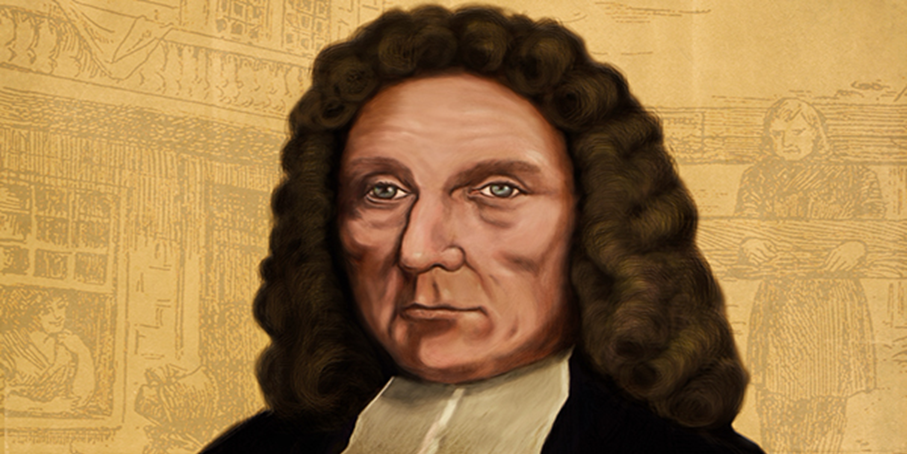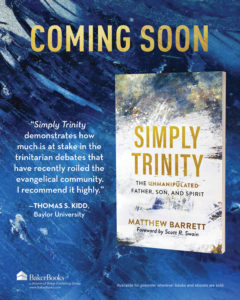
Keach’s Creativity as an Example for Ministers Today
H elp me aloud thy wonders to declare
elp me aloud thy wonders to declare
Amongst thy chosen people everywhere;
That all may know the riches of thy grace,
And sinners flock thy gospel to embrace.
– Benjamin Keach, War with the Devil
In their context within War with the Devil, these words come as the overflow of a youthful heart recently redeemed by Christ. Yet they also express the heart of the middle-aged pastor who penned them in 1677. Though often overshadowed by other figures in Baptist history, Benjamin Keach’s ministry to the Horsleydown congregation during the early days of the denomination provides a fascinating example for ministers today.
As a pastor, Keach was biblically grounded and theologically sound. One of the original subscribers to the 1689 London Confession, he displayed his theological and ecclesiological prowess in writing the “Covenant and Articles of Faith” for his local congregation. Keach, however, was also brilliantly creative. This creativity, demonstrated in his use of metaphors, allegories, poetry, songs, and children’s literature, impacted many subsequent generations and holds great implications for ministry in a post-Enlightenment era.
Creatively Reaching Children
Keach’s desire to see children come to faith in Christ and grow in that faith led him to consider the best way to accomplish that goal. He recognized that creativity helps children learn. Therefore, the primer he wrote for children featured sections catered to the educational levels of specific age groups and introduced song and verse as part of the material. This was a revolutionary idea for the time. He was also heavily involved, along with others such as William Collins, in the production of the catechism often called Keach’s Catechism or The Baptist Catechism. The catechism allowed children to learn biblical truths in a manner approachable for even the youngest learners.
Creatively Reaching Adults
Keach helped biblical truths plant deeper roots by appealing to the listener’s theological imagination. Click To Tweet Keach embraced metaphors – in Scripture, preaching, and writing. He even wrote a lengthy text on how to preach metaphorical and typological passages of the Bible. Keach helped biblical truths plant deeper roots by appealing to the listener’s theological imagination. He wrote stand-alone allegories, poetry, and numerous hymns to this end. Though none of his works gained the notoriety of his contemporary John Bunyan’s The Pilgrim’s Progress, they are nevertheless noteworthy. These works demonstrate a pastor’s desire to help his congregation understand weighty theological issues. In The Travels of True Godliness for example, Keach utilizes allegory to help his readers see their own need for godliness. He also highlights the numerous counterfeit qualities masquerading as godliness, noting that these ultimately lead to destruction.
Similarly, War with the Devil traces a young man’s journey to salvation. This poetic dialogue includes such characters as Youth, Conscience, Truth, the Devil, Grace, Jesus, and more throughout the pages of the text. Many believers will find the conversation among these characters reminiscent of their own salvation experience. He also includes biblical references on nearly every page to emphasize the points being made in the dialogue. The artistry with which this extended poem presents biblical truths led to its hearty reception by the community when it was published.
As mentioned previously, the regular use of song in spiritual instruction and worship, at least in English churches of the day, was simply unheard of. The only exception to this was perhaps the singing of the Psalms. Therefore, when Keach introduced congregational hymn singing in Horsleydown in 1673 he shattered cultural norms and stirred up tremendous controversy. His willingness to step outside of what was comfortable and what was expected continues to impact believers to this day. Now, nearly every Baptist church incorporates singing as an established part of the worship service.
Creatively Reaching Future Generations
Elias Keach, Benjamin’s son, carried on much of his father’s ministry, even bringing it across the ocean to America. Additionally, the elder Keach pastored John Beddome and played a key role in the latter’s call to ministry and subsequent appointment to the pastorate. While John Beddome may not be a household name, his son Benjamin Beddome also served as a pastor and wrote a catechism and numerous hymns throughout his ministry. It seems what John Beddome gleaned from Keach was faithfully passed on to the next generation.
The Enlightenment ushered in an era that essentially divorced facts from creativity, and this can be seen in the church as well. Click To Tweet More than a century after Keach’s death, Charles Spurgeon took the pastorate of the same fellowship Keach served for so many years (by that time called New Park Street Chapel, and later Metropolitan Tabernacle). Though Spurgeon did not care for Keach’s poetic style, he admired the man and his creativity in ministry as he carried on the tradition of congregational hymn singing that Keach had established, a tradition that had remained unbroken through the years.
Creatively Reaching the People Around Us
What can we learn today from Keach’s ministry? If Keach needed to think creatively to help his biblically literate community better understand Scriptural truths, how much more so must we willingly think outside the box in order to reach our communities? People today are yearning for truth, but attention spans and biblical literacy rates have plummeted. Meanwhile, the number of those claiming no religious affiliation at all has been growing exponentially for several years.
The Enlightenment ushered in an era that essentially divorced facts from creativity, and this can be seen in the church as well. The gospel never changes, neither does orthodox theology. But our delivery system can – and indeed must – adapt to reach an audience desperately in need of the hope of Christ and bored with rote repetition and dry statements of truth. Like Keach, we must embrace new methods of presenting timeless material, and be willing to face criticism for breaking the mold.
Perhaps you do not consider yourself “the creative type.” A commitment to creatively presenting the gospel offers the unique opportunity to enlist members of the congregation whom God has gifted with creative abilities. God has created the body to function in unity and has granted each member a unique way to contribute. Whatever your role within the body, give others the freedom to think creatively, and be prepared to help them carry out their ideas.
Not every idea will be a winner. Some ideas may flop or only be useful for a season. That is okay; it is part of the process. If an idea does not work or stops working over the course of time, try something different. Keach’s War with the Devil was edited numerous times to update the language and make it more accessible to modern readers. Creative gospel ministry requires faithfully and frequently evaluating the best way to reach people in ever-shifting cultural climates. Let us take a page from Keach’s book and ask God to show us creative ways to engage our communities with the gospel “that all may know the riches of thy grace, and sinners flock thy gospel to embrace.”

